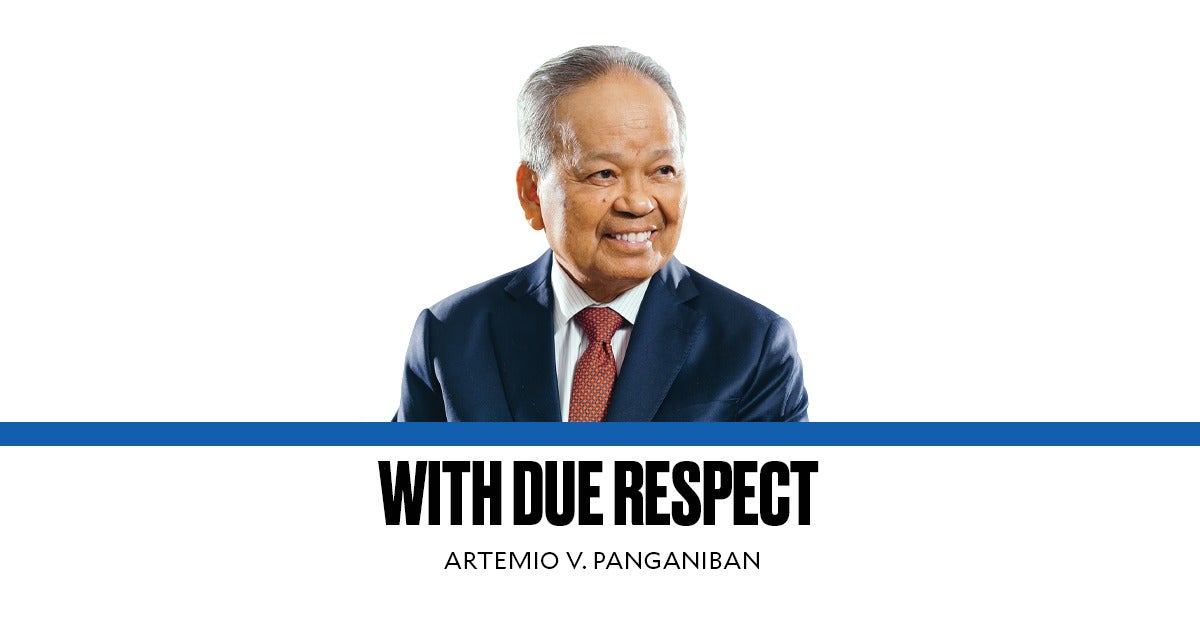Lawyers’ responsibilities and accountabilities

My column on the sad saga of Dr. Iggy Agbayani (11/13/23) evoked calls to discipline his lawyer, and necessarily, to glance at the new Code of Professional Responsibility and Accountability (CPRA) of attorneys approved by the Supreme Court on April 11, 2023. The CPRA updated and replaced the old Code of Professional Responsibility approved on June 21, 1988. And a study of the CPRA will also mean a look at the Court’s “Strategic Plan for Judicial Innovation 2022-2027” (SPJI) unveiled a year ago. Let us begin this two-part series by recalling the SPJI’s effort to turn the judiciary toward hi-tech and artificial intelligence (AI) detailed in this space on Sept. 25.
THIS HISTORIC TURN WAS EXPANDED by the Court to cover all attorneys-at-law. The old 1988 Code “reflected the then prevailing trends, views and attitudes regarding the practice of law, while the role of modern-day lawyers has expanded and shifted from advocates to peacemakers, from solicitors to specialists, and from counterparts to collaborators.” Like the SPJI, the new CPRA considered “our laws and socio-economic life as a people, as well as the rapid technological advancements around the world which have shaped the way lawyers interact with society, the legal profession, the courts, and their clients.”
The 56-page CPRA is divided into six major “Canons” that in turn are separated by several sections, the longest being Canon VI with 53 sections (constituting over a third of the 56 pages) that detail the causes and processes of how attorneys are to be held accountable for their illegal, negligent, or unethical actions.
I humbly view the SPJI and the CPRA as unequivocal endorsements of my own philosophy of liberty and prosperity under the rule of law. Thus, my piece today will concentrate on the hi-tech provisions of the CPRA; and next Monday, I will discuss CPRA’s numerous provisions that express minutely and laudably the ethical challenges facing the super lawyers of the AI age.
Lay readers will please note that the title “attorney-at-law” refers only to those who passed the bar exams given by the Supreme Court. This title may be used by justices, judges, prosecutors, practicing attorneys, notaries public, as well as lawyers in government, in business, in the academe, or in any capacity that requires the passing of the bar exam as a condition for the exercise of their duties and functions. All of them are bound by their CPRA oath that they take before the Court en banc usually at the Philippine International Convention Center to “conscientiously and courageously work for justice, as well as safeguard the rights and meaningful freedoms of all persons, identities and communities.”
THE RESPONSIBLE USE OF SOCIAL MEDIA by all lawyers is provided in Sections 36 to 44 of Canon II (titled “Propriety”) that begins with the overarching “duty to understand the benefits, risks, and ethical implications associated with the use of social media” and “to ensure that his or her online posts, whether made in a public or restricted privacy setting that still holds an audience, uphold the dignity of the legal profession and shield it from disrepute, as well as maintain respect for the law.”
Then, the various sections list the prohibited online acts; i.e., a lawyer shall (1) “not knowingly or maliciously post, share, upload or otherwise disseminate false or unverified statements, claims, or commit any other act of disinformation;” (2) “not create, maintain, or operate accounts in social media to hide his or her identity for the purpose of circumventing the law or the provisions of the CPRA;” (3) “not reveal, directly or indirectly, in his or her online posts confidential information obtained from a client or in the course of, or emanating from, the representation, except when allowed by law or the CPRA;” and (4) “not communicate, whether directly or indirectly, with an officer of any court, tribunal, or other government agency through social media to influence the latter’s performance of official duties.”
I CANNOT END THIS COLUMN without acknowledging the backbreaking spadework of the 15-member “sub-committee” responsible for finalizing the CPRA composed of Supreme Court Associate Justices Amy C. Lazaro-Javier (chair), Samuel H. Gaerlan and Maria Filomena D. Singh (vice-chairs) with the following members: Geraldine C. Fiel-Macaraig (Court of Appeals), Ma. Theresa Dolores C. Gomez-Estoesta (Sandiganbayan), Josefe C. Sorrera-Ty (Legal Education Board), Caridad M. Walse-Lutero (Regional Trial Court, Quezon City), James T. Sy (Regional Trial Court, Manila), Jackie B. Crisologo-Saguisag (Metropolitan Trial Court, Makati), Avelino V. Sales Jr. (National Director for Bar Discipline), Tranquil Gervacio S. Salvador III (Integrated Bar of the Philippines, Quezon City Chapter), Ma. Soledad Deriquito-Mawis (Philippine Association of Law Schools), Fina Bernadette dela Cuesta-Tantuico (Philippine Bar Association), Joan S. Largo (University of San Carlos) and Antonio Ceasar R. Manila (Office of the Chief Justice).
Next Monday, I will take up the duties of lawyers to the country and to their clients, like Doctor Agbayani.
—————-Comments to chiefjusticepanganiban@hotmail.com

















